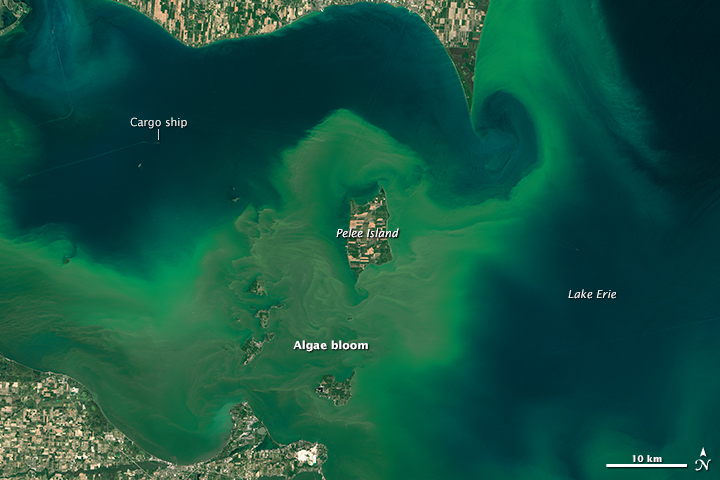A statement released this week by 14 groups from Canada and the U.S., including World Wildlife Fund Canada, says that cutting phosphorous in Lake Erie by 40 per cent is a commendable target, but it should be bound by clear timelines and include the entire Lake system. The partnership was developed in response to revised phosphorus targets put forward by a Canada-U.S. government committee to reduce harmful algae blooms in Lake Erie’s western basin.
“For World Wildlife Fund Canada, the recommendations build upon our analysis of the health of Canadian watersheds, including the Great Lakes basin,” says James Snider, Acting Vice President of the Freshwater Program, WWF-Canada. “We found that phosphorus levels exceeded water quality guidelines in nearly 80 per cent of water samples taken from the rivers on the Canadian side of the watershed,”
Given the large number of organizations working on similar issues in the Lake Erie basin, WWF-Canada, Freshwater Future, Freshwater Future Canada, Ohio Environmental Council, Environmental Defence and Alliance for the Great Lakes decided to coordinate their response. In addition to timelines, the group suggested that the targets include both eastern and western basins, that monitoring of phosphorous concentrations should be adjusted for variability in water levels, and that management actions be supported by with increased monitoring and research to assess the sources of phosphorous.
“Forty per cent is an excellent start. We should all commend this move. But it needs to be implemented with an adaptive management approach and supported by investment for science and management,” says Snider.
Environment Canada and the U.S. Environmental Protection Agency will consider the input provided through submissions and consultation process and finalize the targets in February 2016.













Cutting phosphorous in Lake Erie by 40 per cent is an excellent start , but it is a big challenge too.! Great job.
Cutting phosphorous in Lake Erie by 40 per cent is an excellent start , but it is a big challenge too.! Great job.